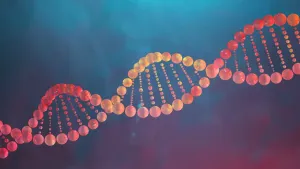Silent mutations, often referred to as synonymous mutations, are a fascinating aspect of molecular biology. While they may not result in any observable changes in the phenotype of an organism, these mutations play a crucial role in genetic variation and evolutionary processes. In this article, we will delve into the definition of silent mutations, explore some intriguing examples, discuss their structural consequences, and highlight their relevance in research and clinical applications.
Silent Mutation Definition
Silent mutations are genetic mutations that occur in the DNA sequence of a gene but do not lead to a change in the corresponding amino acid sequence of the protein it encodes. These mutations primarily affect the third base pair of a codon, which often exhibits redundancy in the genetic code. Due to this redundancy, multiple codons can encode the same amino acid. Silent mutations typically involve substitutions of nucleotides, where a different base is introduced without altering the specified amino acid during translation.
The term "silent" may be misleading, as these mutations do have an impact on the genetic material. Although the resulting protein remains unchanged, silent mutations can affect various aspects of gene expression, such as mRNA stability, splicing efficiency, and protein folding. Therefore, despite not causing a noticeable difference in the phenotype, silent mutations can influence the regulation and functionality of genes.
Silent Mutation Examples
Silent mutations can occur in various organisms, ranging from bacteria to humans. Here are a few notable examples:
- The β-Globin Gene: The β-globin gene, responsible for hemoglobin production, has been extensively studied for silent mutations. One example is the codon change from GAA to GAG, both encoding the amino acid glutamic acid. This substitution is a silent mutation since it does not alter the resulting protein's function or structure.
- The CFTR Gene: Cystic Fibrosis Transmembrane Conductance Regulator (CFTR) gene contains several silent mutations. For instance, the codon change from GTC to GTG in certain individuals does not affect the synthesis of the corresponding protein, demonstrating the silent nature of the mutation.
- Bacterial Antibiotic Resistance: Silent mutations can also impact antibiotic resistance in bacteria. The genetic code redundancy allows certain mutations to occur without altering the function of antibiotic target proteins. This phenomenon, termed "silent resistance," enables bacteria to survive antibiotic exposure without compromising their fitness.
These examples emphasize the significance of silent mutations in the context of genetic diversity and evolutionary processes.
Structural Consequences
Although silent mutations do not result in changes to the amino acid sequence, they can still have structural consequences and impact gene regulation.
Here are some notable aspects affected by silent mutations:
- mRNA Stability: Silent mutations can influence mRNA stability by altering its secondary structure or affecting interactions with regulatory molecules. Changes in stability can subsequently impact gene expression levels and protein production.
- Splicing Efficiency: Silent mutations can affect splicing, the process by which introns are removed from pre-mRNA molecules. Disruptions in splicing due to silent mutations can lead to aberrant splicing patterns, potentially resulting in altered protein isoforms.
- Protein Folding: Silent mutations may influence protein folding, despite not directly altering the amino acid sequence. Changes in codon usage or specific nucleotide interactions can affect the efficiency and accuracy of protein folding, potentially impacting protein function.
It is crucial to recognize that even seemingly silent mutations can have subtle effects on gene expression and protein structure, highlighting the intricate relationship between genotype and phenotype.
Research and Clinical Applications
Silent mutations have garnered significant attention in both research and clinical settings due to their potential implications.
Here are a few notable applications:
- Evolutionary Studies: Silent mutations provide insights into evolutionary processes and genetic diversity. By comparing silent mutation patterns across species or populations, scientists can unravel the relationships between organisms and understand how genetic changes accumulate over time.
- Pharmaceutical Development: Silent mutations can influence drug responses and the efficacy of therapeutics. Studying silent mutations in target genes can help identify genetic variations that impact drug interactions, enabling personalized medicine approaches.
- Gene Therapy: Silent mutations can play a role in gene therapy strategies. By introducing silent mutations in specific regions of a gene, researchers can modify its expression or stability, allowing precise control over gene regulation.
- Diagnosis and Genetic Testing: Silent mutations can be relevant in genetic testing for hereditary diseases. They can help identify carriers of genetic disorders without causing symptoms, aiding in genetic counseling and family planning decisions.
Conclusion
Silent mutations may not lead to visible changes in an organism's phenotype, but their impact on gene expression, protein structure, and evolutionary processes should not be underestimated. By understanding the significance of these mutations, scientists can unravel the complexities of genetics and pave the way for innovative research and clinical applications. Silent mutations serve as a reminder that even small alterations in the DNA sequence can have profound implications in the intricate world of biology.

FAQs About Silent Mutations
Can silent mutations have any impact on the organism?
Although silent mutations do not result in changes to the amino acid sequence and observable phenotypic traits, they can still influence gene expression, mRNA stability, splicing efficiency, and protein folding. These effects can have subtle but important consequences for the regulation and functionality of genes.
Are silent mutations common in the human genome?
Yes, silent mutations are relatively common in the human genome. The redundancy of the genetic code allows for multiple codons to encode the same amino acid, providing a degree of flexibility in the DNA sequence. Silent mutations contribute to genetic variation and can accumulate over generations, playing a role in evolution.
How are silent mutations different from other types of mutations?
Silent mutations differ from other types of mutations, such as missense or nonsense mutations, primarily in their impact on the amino acid sequence of the protein. Silent mutations do not change the specified amino acid, whereas missense mutations result in a different amino acid, and nonsense mutations introduce a premature stop codon, leading to a truncated protein.
Can silent mutations be inherited and passed on to future generations?
Yes, silent mutations can be inherited and passed on to future generations, just like any other genetic mutation. Although they may not cause noticeable changes in the phenotype, silent mutations can contribute to genetic diversity and be subject to natural selection and evolutionary processes.
Are silent mutations relevant in medical research and diagnostics?
Yes, silent mutations have relevance in medical research and diagnostics. They can be used to identify carriers of genetic diseases, provide insights into drug responses, and play a role in gene therapy strategies. Understanding silent mutations can enhance our understanding of genetic disorders and aid in personalized medicine approaches.






